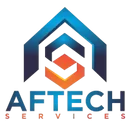In today’s fast-paced technological landscape, businesses constantly seek ways to enhance efficiency, reduce errors, and streamline operations. One key strategy to achieve these goals is automating manual processes. This comprehensive guide will delve into the intricate world of process automation, examining its technical nuances and how it can be harnessed to optimize your operations.
What is Automating?
Defining Automation
Process automation uses technology to perform tasks with minimal human intervention, increasing productivity and reducing the margin for error. For tech experts, this means leveraging many tools and techniques to make manual processes more efficient.
The Technical Aspect of Automating
Automation, in the context of technical experts and professionals, entails a multifaceted approach that involves a deep understanding of processes, coding, scripting, and the seamless integration of Application Programming Interfaces (APIs). In this note, we will delve into the technical intricacies of automation, focusing on workflow analysis, programming and scripting, and the integration of APIs.
Workflow Analysis
Before embarking on the automation journey, conducting a meticulous workflow analysis is imperative. This preliminary step comprehensively examines existing processes to identify areas where automation can be seamlessly integrated. Workflow analysis is a systematic approach to dissecting and understanding how an organization functions.
Tech experts employ various tools and techniques in workflow analysis, which often starts with data analytics. Through data analysis, experts can pinpoint bottlenecks, redundancies, and areas prone to human error. This data-driven approach facilitates the strategic implementation of automation to address these pain points.
In addition to data analytics, tech experts often utilize visual aids such as flowcharts. Flowcharts provide a graphical representation of a workflow, making it easier to identify opportunities for automation. These visual representations are blueprints for designing automated processes, ensuring nothing crucial is overlooked.
Workflow analysis is an ongoing process, and tech experts continuously refine and adapt their Automation strategies based on the evolving needs and objectives of the organization. It is the foundation upon which the edifice of automation is built.
Programming and Scripting
Automating frequently relies on the art of programming and scripting. Tech experts harness the power of programming languages like Python, JavaScript, and PowerShell to create custom scripts that automate repetitive tasks. These scripts serve as the digital workforce that carries out instructions with precision and consistency.
Python, with its rich ecosystem of libraries and ease of use, has emerged as a go-to language for automation. It allows tech experts to develop scripts that interact with software, databases, and various APIs, enabling the orchestration of complex processes. JavaScript, primarily used for web-related tasks, and PowerShell, often utilized in Windows environments, are equally potent in the hands of a skilled tech expert.
These scripts are not mere lines of code; they are tailored solutions that can mimic human actions within the digital realm. They are the bridge between the technical expertise of professionals and the practical execution of automation.



